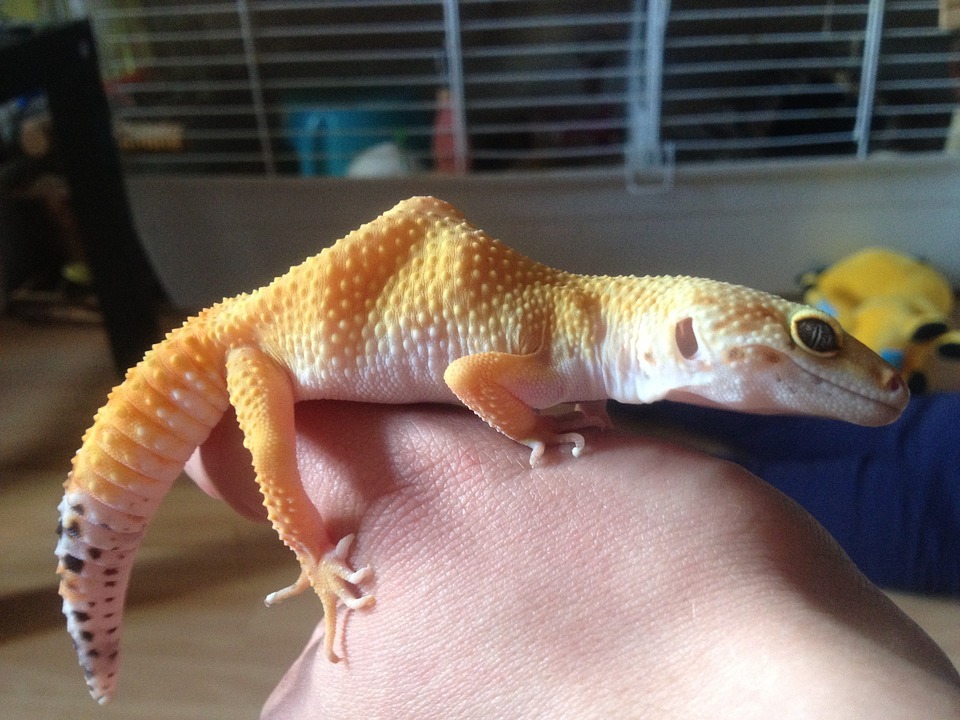Leopard geckos are unique lizards. They are calm, quiet, and not-at-all aggressive, and you can easily take care of them. But their moods are hard to read. And, being a pet owner, you may want to know whether your pet is happy or sad.
A gecko is known for its ability to shed a tail when it feels threatened. But how to tell if a leopard gecko is happy? Your little friend has its way of letting you know its mood. Here, look at a few signs that can confirm that your pet is happy.
Active Leopard Geckos Are Happy Pets
Observe your gecko’s activity in the night to determine whether he is happy or sad. You need to find it alert and active. If you see it exploring its dwelling place, responding to things it sees and hears, and actively pursuing its prey, you can relax. Your pet is happy.
Leopard geckos that are always in their hiding places and appear sluggish are the unhappy ones.
Good Appetite
Geckos are not picky eaters. They love to eat a variety of insects, especially if they are alive. They can eat crickets, mealworms, and roaches. If your pet finishes off his meal, you can consider that it is happy. However, you need to monitor your gecko’s activities and check if it has stopped eating.
Young leopard geckos need to be fed daily, but adults do not require food every day. They prefer to eat once every two or four days. So do not panic if your pet has not eaten for a week or more.
However, if you notice that your gecko is losing weight, you need to determine why it has happened. Speak to your vet if you are unable to figure out the reason. You can also google “How to tell if a leopard gecko is happy?” and get more information on this from the internet.
Flicks Tongue
A leopard gecko uses its tongue for prey capture and ingestion. You can also see it flicking it. Is it doing it frequently? If yes, it’s a sign that your pet is active, happy, and healthy.
Temperature, Heat Lamps, UV Lights and Humidity
Leopard geckos control their body temperature by adjusting their surroundings. Because of this, it’s crucial to supply a “thermogradient,” which has a cooler region at one end and a heat light at the other. To control the temperature, use thermostats. You should also keep in mind:
Basking in the Heat: Leopard geckos absorb heat through their bellies. If you see that your pet is basking in the heat in the night – lying flat on one spot – it is a reason to smile. It means that your gecko is happy and there is nothing to worry about. This should remain between 28 and 30 °C during the day, and the cool end 24 to 26 °C.
Dry Environment: Leopard geckos require a setting that is mostly dry. Using a hygrometer, check the humidity at the cool end of the tank; it should be between 30 and 40%.
Ultraviolet Light: Low-level UV light is necessary for your gecko. This will be given to them via a 2-5% UVB bulb, enabling their bodies to produce vitamin D, a necessary mineral for storing and utilizing calcium.
Hiding Places and Flooring
Your leopard gecko needs places to hide, as well as low, sturdy branches or rocks to climb on, to simulate its natural habitat.
To reduce the possibility of impaction, a potentially fatal problem when particles become trapped inside your gecko’s tummy and form a blockage, the floor covering, also known as the substrate, must be natural. Never use beech wood chips or “caci-sand,” as your leopard gecko cannot safely consume these.
What and When do Geckos Eat?
Live insects such as crickets, “calci worms,” waxworms, and little locusts (Note: no larger than your gecko’s head in size) make up the majority of the diet of leopard geckos. To keep these insects hydrated, you should also give them access to fresh produce and clean water.
Young geckos should be fed daily, and adults should be fed every other day. You’ll also need to boost your gecko’s diet with additional nutrients. Find out which are ideal for your pet by consulting your veterinarian.
Likes To Be Held
Leopard geckos are docile and can tolerate being handled well. And, if it does not mind being held by you, you can be assured that it is happy, healthy, and loves playing on your palm.
Conclusion
Owning a leopard gecko requires a significant commitment because they can reach heights of 15 to 25 centimeters and live for 10 to 20 years in captivity. Although they prefer to live alone, if handled cautiously, they can grow accustomed to being handled. The eyes and tail of a gecko in good health are bright and clear. Only while it is sleeping should its tummy touch the ground.
Figuring out whether or not your leopard gecko is happy can be pretty complicated. But, it is a lot easier to ensure that your gecko is happy. Make sure that its dwelling place is appropriate for it. It should have a heat source and hiding places. You also need to feed it the right food. If you follow all of this, there’s no reason for your pet gecko to be unhappy.

